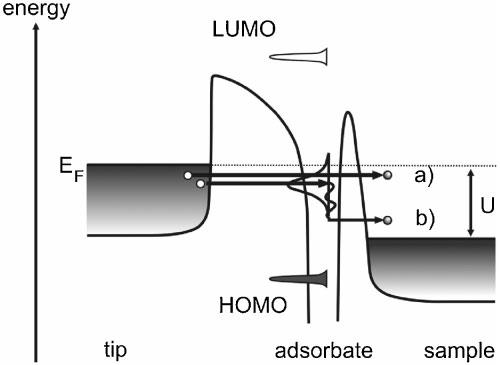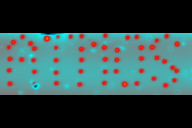Inelastic Electron Tunneling Spectroscopy
Inelastic Electron Tunneling Spectroscopy (IETS) is used to investigate the vibrational properties of single molecules on surfaces. In contrast to STM as an imaging technique and STS, where only elastically tunneling electrons are taken into account (path a in Fig. 1), IETS considers the inelastically tunneling electrons. This small part of electrons (typically in the range of 10-4) lose a certain amount of energy during the tunneling process due to the excitation of adsorbate vibrations.

Fig.1: Schematical depiction of the a) elastic and b) inelastic tunneling process [K. Morgenstern et al., Phys. Status Solidi B 250, 9, 1671–1751 (2013)].
The inelastic tunneling channel opens when the energy of the tunneling electrons is equal to the excitation energy ħω of adsorbate vibrations (path b in Fig. 1). Above this energy, inelastic tunneling electrons can enter unoccupied states of smaller energy. To measure the vibrational energy, the nonmonotonic changes in the conductance of the sample at the threshold energy ħω/e are considered. In a first approximation, the additional tunneling channel leads to an increase of the conductivity, but it has been shown in theory that the overall conductivity can even decrease due to the reduction of the elastic channel caused by many body effects.
Controlled manipulation of single atoms and small molecules using the scanning tunnelling microscope

This article reviews manipulation of single molecules by
scanning tunnelling microscopes, in particular vertical manip-
ulation, lateral manipulation, and inelastic electron tunnelling
(IET) manipulation.

